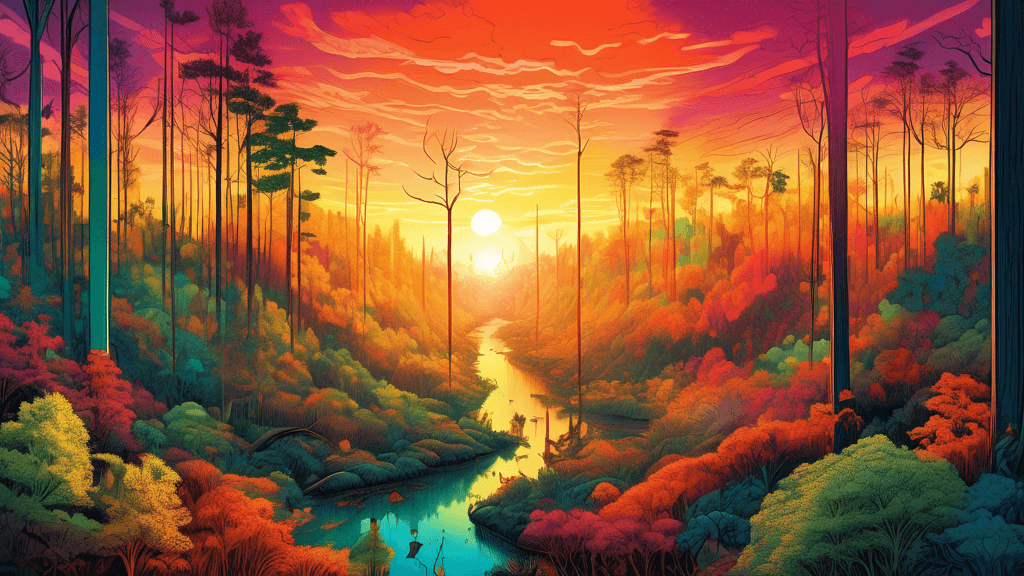
Capturing Change: How Landscape Photography Enhances Environmental Consciousness
Share
The Power of the Lens in Environmental Awareness
In the age of rapid environmental changes, landscape photography is not merely a form of art; it has morphed into a pivotal tool for environmental activism and education. By freezing the transient beauty of natural landscapes, photographers provide us with a visual archive of the planet—a persuasive and undeniable testament to both the beauty of nature and the devastating impacts of human actions.
Why is Landscape Photography Important for Environmental Conservation?
Landscape photography does more than capture beautiful scenes. It is a form of documentation that can highlight the changes in our environment over time. This art form helps to bridge the gap between distant ecosystems and global audiences, making the abstract concept of climate change starkly real and immediate.
Moreover, these powerful images can stir emotions and provoke action by showcasing the stark contrast between untouched nature and impacted environments. But how exactly does this visual medium enhance environmental consciousness?
Documenting Change Through the Lens
One of the most influential roles of landscape photography in environmental conservation is its ability to document change. Photographs of the same location, taken years apart, can reveal shifts in landscape formation, changes in vegetation, and impacts of climate change such as glacier retreats and rising sea levels. This visual evidence is not only compelling but also serves as a tool for environmental scientists and activists.
- Visual Impact: Photographs can often convey messages that words cannot. Seeing the effects of deforestation or melting ice caps can have a profound impact on public perception and behavior.
- Educational Value: Photography exhibitions and photo books can educate the public about environmental issues through captivating imagery and insightful commentary.
- A Call to Action: By evoking emotional responses, landscape photographs can act as a catalyst for political and social changes, driving environmental movements and policy adjustments.
Case Studies: Impact on the Ground
Visualizing the Effects of Climate Change
Consider the works of photographers like James Balog, who founded the Extreme Ice Survey (EIS). His extensive time-lapse photography of glaciers has provided some of the most convincing evidence of climate change. These images have not only educated and informed but have also been used in scientific studies and reports, underlining the importance of photography in environmental advocacy.
Encouraging Conservation Efforts
Peter Essick’s photographs featured in National Geographic over two decades have shed light on topics ranging from pollution to the beauty of untouched wilderness. His thought-prophoking images inspire conversation and encourage conservation efforts, highlighting both the fragility and resilience of nature.
Challenges and Ethical Considerations
Despite its potential, landscape photography also faces challenges that can impact its efficacy in raising environmental awareness. Issues such as accessibility to remote areas, the carbon footprint associated with extensive travel, and the risk of disturbing untouched natural sites must be addressed by photographers conscientiously.
Furthermore, ethical considerations such as the portrayal of indigenous communities and wildlife, respecting local cultures and habitats, and the impact of sharing locations widely on social media, which can lead to over-tourism, are paramount. Photographers must navigate these responsibilities carefully, to ensure that their work contributes positively to environmental conservation.
How Can You Make a Difference?
As viewers, we can imbue these photographic works with meaning through our actions. Engaging with and sharing powerful landscape photography, participating in conservation activities, or simply becoming more aware of the environmental issues depicted, can all stem from experiencing these profound images.
Additionally, supporting photographers who commit to ethical practices in their work furthers the cause of truthful, impactful environmental storytelling. The choice of which photographs to share, and the narratives we attach to them, can significantly influence public understanding and actions towards environmental conservation.
Conclusion: A Picture is Worth a Thousand Words
Landscape photography holds a unique position at the intersection of art, science, and activism. Through the lens, photographers have the power to capture the imagination and influence the conscience of society. As stewards of the environment, embracing this form of expression as part of a broader conservation strategy could indeed change the trajectory towards a more sustainable and aware global community.
Call to Action
Leverage the power of image to create change. Get involved by learning more about environmental issues through the vast array of landscape photography available online and in exhibitions. Share influential images to spread awareness, and support conservation efforts that you believe in. Together, each frame captured and shared can help to sculpt a future where both humanity and nature thrive in harmony.





